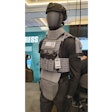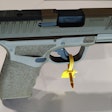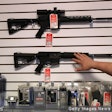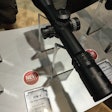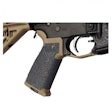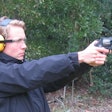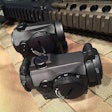In today's law enforcement climate, the ability to project maximum firepower is more necessary than ever. That which is fashionable and "tactical" makes the front page of police and firearms publications on a daily basis.
Officers and agencies are constantly bombarded with the latest and greatest in high-capacity pistols and long-range sniper rifles. Many of these firearms fill a legitimate need, while others are more trendy than useful. An individual officer or agency purchaser must ask the question, "What best fills the need for the situations that arise in my geographic area and how do I fill them on a budget while still providing officers with an effective way to protect the public and themselves?"
Many agencies, officers, and armorers are faced with the question of whether their shotguns can fill the void of a patrol rifle or whether it should be replaced or supplemented with a modern AR- or FAL-style high-capacity carbine.
The answer lies in understanding the capabilities of each firearm type and availability in your marketplace to fill a specific need. One must put hubris aside and be willing to answer this question only after further research.
We must first understand that today's shotguns and rifles have crossbred features that mimic each other, but there are distinct differences that are fundamental to each type. It's paramount that you understand those differences to better fill your own or your agency's needs.
A shotgun is designed to bring as much firepower and kinetic energy on target as possible. It is fundamentally designed to fire a group or concentration of multiple projectiles held together in a cylindrical shotshell.
Today's modern shotguns can also accomodate individual lead or steel slugs, as well as less-lethal ammunition.
Many have fiber optics, red-dot lasers, and night sights, as well as law enforcement versions that elevate the capacity from six to eight shells with an added six in a horizontal side saddle adjacent to the receiver. Vertical column magazines holding 12 rounds are available in the Russian Saiga versions, as well as a traditional tube-fed version.
There are also short-stock and short-barrel "cruiser" versions from Mossberg that incorporate slings for recoil control and door breachers that can be affixed to the muzzle. This type of flexibility gives the shotgun the ability to mimic the rifle, but never replace it in its entirety.
These features allow individual officers and agencies the ability to adopt a rifle-shotgun hybrid. As a general rule, shotguns are less expensive than rifles because they have fewer moving parts, giving those officers and agencies with budgetary constraints the ability to arm patrol officers with added firepower.
Although these modern shotgun features are much appreciated by the law enforcement community, they will never replace the rifle's ability to place a single bullet on target over an extended range with extreme precision or the carbine's ability for quick and multiple followup shots at a respectable range and with manageable recoil control.
One must never forget that tactical upgrades to the shotgun are designed for "general" accuracy and will never replace the rifle's fundamental role for exceptional precision and recoil management.
Related:










